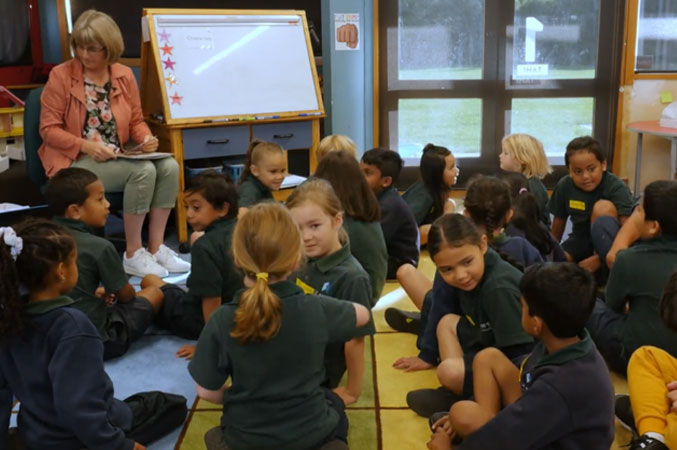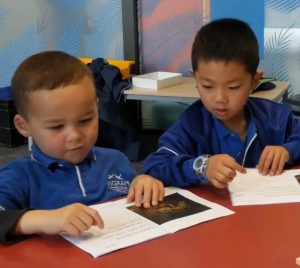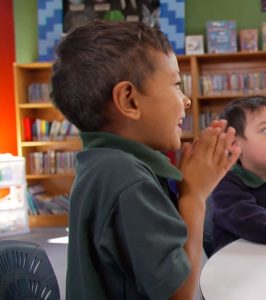Supporting children who are English Language Learners succeed

It is estimated that 190 languages are spoken in New Zealand (Stats NZ 2018). Although English is spoken by 95% of the population, the next common languages spoken are Te reo Māori (186,000 speakers), Samoan (102,000 speakers), Northern Chinese including Mandarin (95,000 speakers), and Hindi (69,500 speakers). The 2018 census data indicated 23,000 people use New Zealand Sign Language. The languages spoken by 5- 9-year-old children in New Zealand reflect this pattern with Te reo Māori, Samoan and Northern Chinese the most common languages other than English.
Understanding how our young children who enter school learning English as their second or other language succeed in their early literacy development is critically important. We also need to understand how English literacy teaching practices reflect our improved understanding of the cultural and social importance of bilingualism and indigenous languages such as Te reo Māori.
 Our recent data collected from teachers implementing the Better Start Literacy Approach (BSLA) provide us with unique insights into the success of English Language Learners (ELL) in acquiring literacy skills in their first year in English medium learning contexts.
Our recent data collected from teachers implementing the Better Start Literacy Approach (BSLA) provide us with unique insights into the success of English Language Learners (ELL) in acquiring literacy skills in their first year in English medium learning contexts.
We developed the BSLA specifically for our New Zealand education context. It is based on the “science of reading” (i.e., robust research evidence as to effective reading instruction and interventions) and promotes a strengths-based and culturally responsive approach to early literacy teaching. It is set within a Multi-Tiered System of Support framework where Tier 1 (universal or class level teaching) and Tier 2 (small group targeted teaching for learners with greater needs) are aligned. This maximises BSLA teaching intensity for children who need more support in acquiring foundational skills in phonic, phoneme awareness, morphology, word decoding, spelling oral narrative and vocabulary skills.
Using a unique matched control design, we paired 1,853 children identified as ELL with 1,835 peers of the same ethnicity, age, gender, and socio-economic background who were not English Language Learners (non-ELL). The ethnicity of our ELL cohort was mostly Asian, 46%, and Pacific, 26%. Their mean age was 65months, gender 53% male, and 82% were from schools in areas of mid -to high socio-economic deprivation (using NZDepIndex).
 Data analyses indicated ELL respond very well to BSLA teaching. They showed similar positive-growth rates following 10 weeks of Tier 1 (class level) to their non-ELL peers. Despite demonstrating lower phoneme awareness skills at baseline, the ELL performed similarly to non-ELL in word decoding and spelling tasks after 10 weeks of BSLA. Predictors of growth analyses indicated that ELL from areas of low socio-economic deprivation, who used a greater number of different words in their English story retells at school entry/baseline assessment, and females made the most growth in their phonic and phoneme awareness development.
Data analyses indicated ELL respond very well to BSLA teaching. They showed similar positive-growth rates following 10 weeks of Tier 1 (class level) to their non-ELL peers. Despite demonstrating lower phoneme awareness skills at baseline, the ELL performed similarly to non-ELL in word decoding and spelling tasks after 10 weeks of BSLA. Predictors of growth analyses indicated that ELL from areas of low socio-economic deprivation, who used a greater number of different words in their English story retells at school entry/baseline assessment, and females made the most growth in their phonic and phoneme awareness development.
The data showed 11% of the ELL and 13% of the non-ELL cohorts received approximately 10 weeks of supplementary BSLA Tier 2 (targeted small group) teaching. At the next monitoring assessment (20 weeks post baseline assessment) the ELL cohort showed accelerated growth in listening comprehension, phoneme-grapheme matching and phoneme blending skills, catching up to their non-ELL peers.
This data demonstrating a strong response of ELL to BSLA teaching is very encouraging. It suggests when our junior schoolteachers are well supported to implement research based and culturally responsive early literacy teaching, children in their class who are ELL can quickly develop foundational literacy skills in English. With additional Tier 2 support we can expect many ELL to show accelerated progress, catching up to their peers in some areas of oral language and phoneme awareness during their first year at school.
For full details please see Gillon, G. (2023) Supporting children who are English Language Learners succeed in their early literacy development. Main Report presented at the World Congress of Communication Sciences and Disorders, Auckland, 21 August 2023. https://www.betterstartapproach.com/our-research
 BSLA is funded by the Ministry of Education. For more information about BSLA visit the Better Start Literacy Approach website https://www.betterstartapproach.com. To register your interest in the next opportunity for your teachers to undertake PLD in the BSLA please contact [email protected]
BSLA is funded by the Ministry of Education. For more information about BSLA visit the Better Start Literacy Approach website https://www.betterstartapproach.com. To register your interest in the next opportunity for your teachers to undertake PLD in the BSLA please contact [email protected]
